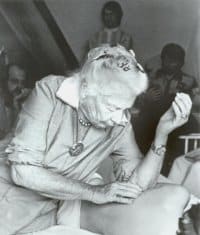Rolfing Structural Integration
 Rolfing® Structural Integration is a comprehensive system of hands-on connective tissue manipulation and movement education which releases stress patterns from the human body. The term Rolfing is derived from the methods originator, Dr. Ida P. Rolf, (Ph.D.)
Rolfing® Structural Integration is a comprehensive system of hands-on connective tissue manipulation and movement education which releases stress patterns from the human body. The term Rolfing is derived from the methods originator, Dr. Ida P. Rolf, (Ph.D.)
Rolf eventually named her work Structural Integration. She discovered that she could achieve remarkable changes in posture and structure by manipulating the body’s myofascial system.*
”Rolfing” is the nickname that many clients and practitioners gave this work,
and is now a registered service mark in 27 countries. Rolfing structural integration has an unequaled and unprecedented ability to dramatically alter a person’s posture and structure.*
The goal of Rolfing, both in manipulation and movement aspects, is to allow
the client to move and function with greater freedom, and to effortlessly
maintain a more upright posture.
It can resolve pain and discomfort from many different causes, including those related to the lingering effects of trauma, back pain, repetitive motion injury and aging. Rolfing is also an excellent foundation for and complement to yoga, pilates and other personal wellness practices.*
Rolfing results in a feeling of fitness and wholeness.
Theory and Principles of Rolfing*
The Rolf Institute has continued Dr. Rolf’s profound inquiry into how to enhance the whole person by organizing the body in gravity. Some of the more important developments to the work since Dr. Rolf’s death are also what now distinguishes the Rolfing brand from all other forms of structural integration:
Principles of Intervention – Rolfing training begins with the ten session series that Dr. Rolf developed, and several variations of this protocol are taught. Over the years, the faculty of the Rolf Institute has articulated the principles on which the original series was based. By understanding these principles, it is possible for practitioners to develop strategies of intervention that recognize the unique needs of the individual client, and to work outside of the ten session series when appropriate.*
Gentle Techniques – Because Rolfers work with the deep myofascial structures, some people can experience the work as uncomfortable. Rolfers have gradually developed a broad range of techniques that produce profound results with less discomfort for the client.*
Joint Mobilization Techniques – The Rolf Institute faculty has created a range of soft tissue techniques to release articular motion restrictions that impede whole body organization. These skills increase the Rolfer’s effectiveness in working with many common structural problems.*
The Personal Experience – Because Rolfing is a holistic technique, it is recognized that changes in structure will impact the whole person, physically, emotionally, and energetically. The Rolf Institute recognizes that ultimately, it is the person’s own experience of the work that is of primary importance. This plays a central role in the transformational aspect of Rolfing.*
The Integration of Structure and Function – a distinctive feature of the Rolf Institute’s curriculum is the unique blending of the functional and structural aspects of Rolfing. In Rolfing Movement Integration, the Rolfer helps clients become aware of inhibiting movement patterns and gives them the means to change them; and in Rolfing structural integration, the Rolfer releases these patterns through manipulation as they manifest in the client’s structure. Rolfing is as concerned with how people experience and use their bodies as with their structural organization in gravity.*
* Various text excerpts: © The Rolf Institute, Boulder, CO, USA.

